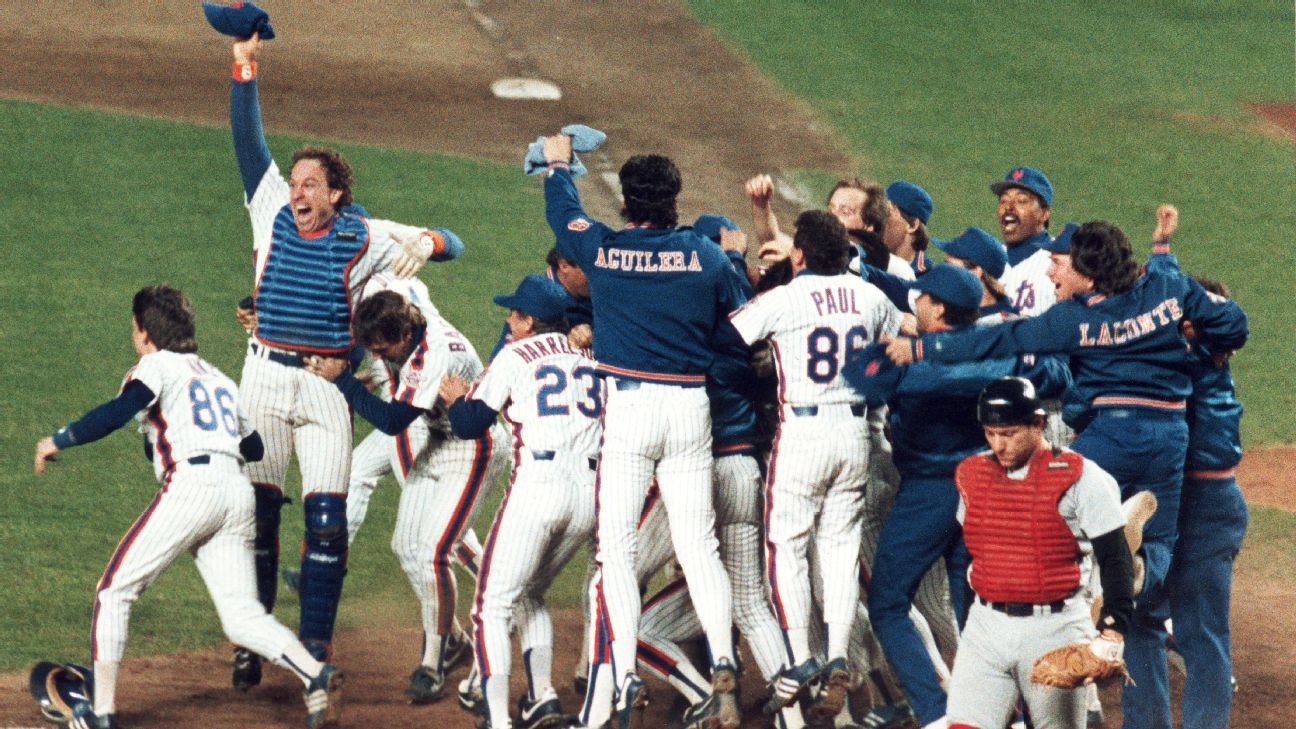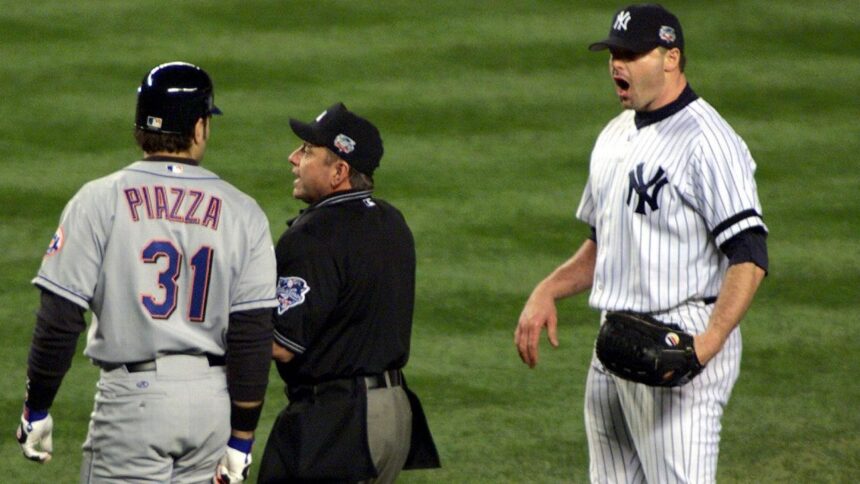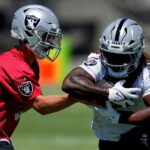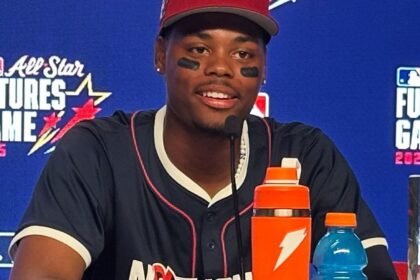Although New York City is synonymous with baseball, the origins of this sport go back much further in time. John Thorn, in his book “Baseball in the Garden of Eden”, points out that games similar to baseball already existed in ancient Egypt almost 4,500 years ago, with a game called “seker-hemat”, which means “hitting the ball”. In the temple of Hatshepsut, a relief can be observed showing Thutmose III holding a ball and a stick, suggesting an early connection to the sport.
However, in more recent times, New York has been the epicenter of baseball. From the iconic 1846 game between the Knickerbocker Base Ball Club and the New York Ball Club in the Elysian Fields, to John McGraw’s transformative New York Giants in the early decades of the 20th century. The story continues with Babe Ruth and Lou Gehrig’s New York Yankees, the arrival of Jackie Robinson to the Brooklyn Dodgers, and continues to the present day with the rivalry between Juan Soto and the New York Mets against Aaron Judge and the Yankees, a battle for the heart and the pocket of baseball fans in the city.
The teams face off at Yankee Stadium as part of MLB’s rivalry weekend, and the boos directed at Soto will symbolize a new level of intensity between the Mets and the Yankees. With this series in mind, we review 10 moments that marked the history of New York rivalries in baseball.
- McGraw expels the Yankees from the Polo Grounds
- Ruth builds a house
- The “Shot Heard ‘Round the World”
- Willie, Mickey, and the Duke
- Mr. October enters, Tom Terrific exits
- The ’86 Mets take over the city
- Interleague play begins
- The New York World Series
- New stadiums in the Bronx and Queens
- Soto flees to Flushing
1920: John McGraw Ejects the Yankees from the Polo Grounds

John McGraw and Babe Ruth shared the Polo Grounds, albeit not willingly, from 1913 until the opening of Yankee Stadium in 1923.
The story goes that McGraw, Hall of Fame manager of the New York Giants, had turned his team into a powerhouse in the National League, winning six championships between 1904 and 1917, while the Yankees, who rented the Polo Grounds from the Giants since 1913, usually finished in the bottom places of the American League.
Everything changed when the Yankees acquired Babe Ruth in 1920, attracting a large number of fans. On May 14, the Giants, with McGraw as co-owner, informed the Yankees that their rental agreement would not be renewed for 1921. With Ruth breaking records with 54 home runs and the Yankees attracting over a million fans, something the Giants had never achieved, McGraw felt envious of the Yankees’ new appeal. The Yankees had to leave.
Was it really like that? It’s possible, especially knowing McGraw, who wasn’t a fan of Ruth or his batting style. However, the Yankees had only played 12 home games at that point, perhaps too early for envy over attendance to set in. The Giants did agree to renew the contract for 1921, albeit with a considerable increase. In perspective, the Giants now saw the Yankees as a potential rival.
This became evident when the teams faced each other in the 1921 and 1922 World Series. The Giants won both times, with Ruth not excelling in either series. Ruth batted .313 with one home run in a series that extended to eight games in 1921, but missed the last three games due to an infected elbow, and then batted .118 in 1922. It would be McGraw’s last World Series title.
1923: Babe Builds a House and Turns New York into a Yankees Town
The threat of the 1920 contract finally spurred the Yankees to build their own stadium, something the American League had supposedly been pressuring the Yankees to do since 1915. “The Yankees will have to build a park in Queens or somewhere else out of the way,” McGraw said. “Let them go and wither on the vine.”
Instead, Yankees owners Jacob Ruppert and Tillinghast Huston purchased the site of a former lumberyard, directly across the Harlem River from the Polo Grounds. The groundbreaking ceremony for the new stadium took place in May 1922 and was completed in less than a year, at a cost of $2.5 million. But Ruppert and Huston wanted more than just a stadium: they wanted a stadium with a larger capacity than any other existing venue.
The original designs called for an enclosed stadium with a capacity for 80,000 spectators, but the design was modified and the upper decks were stopped at the foul poles (they did not extend to center field until 1937). This meant that Ruth never hit home runs in the upper deck of Yankee Stadium.
He did it in the first game there, on April 18, 1923. “In the third inning, with two teammates on base, Babe Ruth hit a wild home run into the right field stands, and that was the real inauguration of the new Yankee Stadium,” wrote the New York Times.
The new stadium unofficially became the House that Ruth built.
The Yankees drew more than a million fans for the fourth consecutive season. The Giants drew 820,000 when the two teams met again in the World Series. This time, Ruth delivered. He hit two home runs in Game 2, drew eight walks, batted .368, and hit another home run in the decisive Game 6 victory.
The Yankees won their first title. They would win 26 more.
1951: The “Shot Heard ‘Round the World”
The Yankees continued to dominate during the Ruth era. After his retirement, DiMaggio entered the scene, and the Yankees won four World Series in a row from 1936 to 1939, including two against the Giants, now in their post-McGraw era.
Meanwhile, the Giants and the Brooklyn Dodgers battled for supremacy in the National League. Jackie Robinson broke the color barrier in 1947, and the Dodgers soon added Roy Campanella and Don Newcombe. The Giants signed Negro Leagues star Monte Irvin in 1949 and then promoted exciting rookie Willie Mays in May 1951.
That season produced the most famous championship race in history. The Dodgers had a 13-game lead on August 13, but the Giants went 36-8 the rest of the way. Five decades later, it was revealed that the Giants used a telescope in center field at the Polo Grounds and wired a cable to a buzzer in the bullpen where the signals were relayed to the batter. The teams finished tied, which required a three-game playoff.
It all came down to the bottom of the ninth inning of the third game, with the Dodgers trying to secure a 4-1 lead. After two hits, one out, and a double by Whitey Lockman that made the score 4-2, Dodgers manager Chuck Dressen called Ralph Branca from the bullpen to replace Newcombe. Carl Erskine was warming up alongside Branca, but legend has it that he threw a couple of curves in the dirt, so coach Clyde Sukeforth advised Dressen to use Branca to face Bobby Thomson, even though Thomson had hit a home run against Branca in the first tiebreaker game.
The first pitch was a called ball. The second pitch was a fastball, high and inside. The Giants announcer, Russ Hodges, made the call:
Branca throws… There’s a long line drive… it’s going to be… I believe… the Giants win the pennant! The Giants win the pennant! The Giants win the pennant! Bobby Thomson hits into the lower deck of the left-field stands. The Giants win the pennant and they’re going crazy. I don’t believe it! I don’t believe it! I don’t believe it! Bobby Thomson hit a line drive into the lower deck of the left-field stands and the place is going wild.
Russ Hodges
The New York Herald Tribune columnist Red Smith wrote perhaps the most famous headline in the history of sports journalism:
Now it is done. Now the story ends. And there is no way to tell it. The art of fiction has died. Reality has strangled invention. Only the absolutely impossible, the inexpressibly fantastic, can be plausible again.
Red Smith
(The Yankees won the World Series, the third of five consecutive).
The 1950s: Willie, Mickey, and the Duke

Nothing symbolized the golden age of New York baseball more than that great existential question: Willie Mays, Mickey Mantle, or Duke Snider? Three Hall of Fame center fielders, all playing in the same city at the same time. “You could get a fat lip in any bar if you started an argument about which one was the best,” wrote Smith.
After all these years, it’s easy to forget that the debate only lasted four years, from 1954 to 1957. Mays and Mantle were rookies in 1951, not yet in their prime, but then Mays was drafted into the army and missed most of the 1952 season and all of 1953. The Dodgers and Giants moved to California after the 1957 season.
Who was the best? His statistics during those four years:
- Mays: .323/.397/.627, 163 HR, 418 RBI, 110 SB, 35.5 WAR
- Mantle: .330/.453/.625, 150 HR, 425 RBI, 39 SB, 39.0 WAR
- Snider: .305/.403/.616, 165 HR, 459 RBI, 21 SB, 29.3 WAR
According to modern analytical methods, Snider is far behind, but he surpassed Mays and Mantle in home runs and RBIs, and his best season was in 1953, so he is somewhat disadvantaged in WAR. He could defend himself more than well with Mays and Mantle, perhaps making it worthwhile for a die-hard fan to risk a fat lip.
From 1949 to 1958, New York teams represented 16 of the 20 teams in the World Series, winning nine. In this four-year period, Mays’ Giants won in 1954, Snider’s Dodgers in 1955, and Mantle’s Yankees in 1956. Then it ended. For a time, New York became a one-team town, with the Yankees dynasty rolling until 1964.1977: With Mr. October, without Tom Terrific
The Mets were born in 1962, playing at the old Polo Grounds until Shea Stadium opened in 1964. Although the Mets were terrible in that first season at Shea, losing 109 games, and the Yankees went to another World Series, the Mets outdrew the Yankees, as they would each year for the rest of the decade and into the 1970s. Along the way, the Miracle Mets won the World Series in 1969 and reached another World Series in 1973.
The Yankees, while not terrible, were struggling. They even played at Shea Stadium in 1974 and ’75 when Yankee Stadium was renovated. In 1976, the Yankees returned to the World Series for the first time in 12 years. The Mets finished with a respectable 86-76. A new era of free agency ushered in the 1977 season and the Yankees had an owner, George Steinbrenner, willing to spend money and happy to hog all the Mets’ headlines.
The Yankees signed Reggie Jackson to a five-year, $3.5 million contract. Suddenly, the $225,000 salary of Mets franchise icon Tom Seaver seemed antiquated. He told reporters he might have been better off if he hadn’t signed the contract and had sought free agency. Mets president M. Donald Grant called Seaver an “ingrate” and complained about the new economic system in the game. Writers clashed in the newspapers. Finally, on June 15, the Midnight Massacre: with the Mets mired in last place, the team traded Seaver to the Cincinnati Reds.
That season began a seven-year streak of irrelevance and losing seasons for the Mets. The Yankees? They were back to being the talk of New York, and that fall Jackson became Mr. October when he hit three home runs in the deciding game of the World Series to beat the Dodgers.
1986: The Mets Take Over the City Again

The Yankees reached the peak of dysfunction in the 1980s, while the Mets rebuilt around young stars like Darryl Strawberry and Dwight Gooden, and veterans like Keith Hernandez and Gary Carter. Steinbrenner fired managers like they were paper towels, including hiring Billy Martin three different times in the decade (and five times in total). The Mets hired Davey Johnson and built the best farm system in the game.
In 1986, the Mets had one of the best teams in National League history, with a record of 108-54 and attracting over 2.7 million fans (and surpassing 3 million in the following two seasons). They fought their opponents on the field, had a lot of fun off it, destroyed a plane with their drunken antics and a food fight after winning the National League Championship Series, and escaped to win the World Series. The Yankees won 90 games that season, but attendance fell to 2.2 million and Steinbrenner’s constant interference, in part, was trying to keep up with the Mets, which ultimately led to a series of bad trades, bad free agent signings, and four consecutive losing seasons, as attendance fell below 2 million.
But the Mets couldn’t stay on top either. Strawberry and Gooden had off-field problems (and both would revive their careers as Yankees). Hernandez and Carter got old. They made bad trades. In 1993, they finished 59-103 despite having one of the highest payrolls in the sport: the worst team money could buy.
1997: Interleague play begins
The interleague play meant that the Yankees and Mets would now meet in the regular season. The rivalry was no longer about getting the headlines and controlling the airwaves, but about beating the other team on the field. Fans invaded each other’s stadiums. The first game was played at Yankee Stadium.
“The capacity crowd was shouting its divided personality at the top of its lungs, with cries of ‘Let’s Go Mets!’ and ‘Let’s Go Yankees!’ competing on the airwaves, their different rhythms creating a cacophony unlike any heard before in the Bronx stadium,” wrote Bruce Weber in The New York Times.
The Mets won 6-0 thanks to Dave Mlicki’s shutout. A Yankees fan said he was going to call in sick to work the next day. “I feel like screaming, ‘What’s going on here?'” the fan said. “We’re the Yankees. They’re the Mets.”
One of the most memorable games occurred on July 10, 1999, when the Mets rallied from two runs down to beat Mariano Rivera with a two-run, pinch-hit single by Matt Franco, after a questionable called ball on an 0-2 pitch. On June 12, 2009, nothing better summarized the Yankees’ way of winning and the Mets’ frustrating mediocrity than Mets second baseman Luis Castillo dropping a fly ball by Alex Rodriguez that would have been the end of the game, allowing two runs to score and the Yankees to take an improbable victory.
But one interleague moment stands out above all others, because it led to one of the most memorable moments in World Series history. In June 2000, Mike Piazza hit a grand slam against Roger Clemens on the way to a 12-2 Mets victory. The teams met again a month later for a day-night doubleheader. In the second game, Clemens hit Piazza in the helmet. Piazza remained on the ground for several minutes and missed a week due to a concussion.
The bad blood remained, and finally boiled over, as both teams finally advanced to the World Series, the first Subway Series since the Yankees and Dodgers faced off in 1956.
2000: The Subway Series Ends with a Three-Peat for the Yankees
“This is going to break a lot of families,” said Yankees manager Joe Torre before the start of the series. The Yankees were going for their third consecutive World Series championship and the fourth in five years. The Mets had Piazza, Edgardo Alfonzo, and a rookie named Timo Perez with 24 games of experience in the Major Leagues.
New Yorkers had to choose a side. Even objective journalists like ESPN’s Steve Wulf: “Just when I think I can’t stand any more complaints from [Chuck] Knoblauch, just when I find the superiority of Yankees fans so unbearable, just when I think I’m ready to throw in the white towel and go with Mr. Met, I see this face,” Wulf wrote. “It’s a face like a baseball glove: old and new, humble and appealing, resolute and kind. It’s the face of a Giants fan who grew up in Brooklyn. It’s the face of Joe Torre. It’s the face of New York.”
Game 1 was scoreless in the sixth inning and Pérez was on first base with two outs when Todd Zeile hit a fly ball to left field. Pérez thought it was going to be a home run; it hit the top of the wall. By the time Pérez started running hard rounding third base, it was too late: Derek Jeter tagged him out. The Yankees would win 4-3 in 12 innings.
Then came the infamous bat flip in Game 2. Clemens started for the Yankees.
“Clemens’ hit on Piazza three and a half months ago has hung over this Series, and although Torre has accused the media of reopening the wound in the last week, the Mets’ hostility toward Clemens has never really dissipated,” Buster Olney wrote in The Times. “Everything Clemens did… would be viewed by the Mets through the prism of that July incident.”
Clemens faced Piazza in the first inning and the Mets catcher hit a foul ball, breaking his bat in the process. Clemens picked up the barrel of the broken bat and threw it in the direction of Piazza, who had started running towards first base. The benches cleared.
“There was no intent there,” Clemens would say after the game. “I had no idea Mike was running.”
In the end: Clemens pitched eight scoreless innings, allowing only two hits. The Yankees won 2-0.
They would win in five games, three consecutive World Series, their dynasty secured. No team has repeated as champion since then.
2009: Yankees and Mets open new stadiums… in the same week
In 1998, a 500-pound concrete and steel beam crashed into the lower seats at Yankee Stadium. Fortunately, it happened when the stadium was empty, but the incident certainly strengthened Steinbrenner’s hand in getting a new stadium. Shea? You could buy tickets to a Mets game and get a seat that literally didn’t exist. If the Yankees were going to get a new stadium, the Mets needed one too.
Both teams would build their new stadiums next to the old ones. The new Yankee Stadium resembled the old one and cost $2.3 billion (about $670 million from the Yankees). The exterior of Citi Field resembled the old Ebbets Field, where the Dodgers had played. It cost $900 million ($135 million from the Mets).
“Shea was old when it was new and the old Yankee Stadium never got old,” said Tim McCarver, the Fox baseball analyst, when the stadiums opened. “You could have gone on and on and on with the old Yankee Stadium. You couldn’t have done that with Shea.”
The Mets opened first, on April 13, losing 6-5 to the Padres. Seaver threw the first pitch, but then the clumsy Mets appeared. Pitcher Mike Pelfrey snagged his cleat in the dirt and fell off the mound. José Reyes slid past second base and was called out. Ryan Church turned a fly ball into a three-base error.
The Yankees opened three days later, also losing, 10-2 to Cleveland, as the bullpen gave up nine runs in the seventh inning. But that game was simply a blip in what would become a championship season, the franchise’s 27th title, and to date, the most recent.
2024: Uncle Steve Signs Soto Away From the Yankees

Before the 2024 season, the Yankees had traded for Soto and he had a great campaign, batting .288/.419/.569 with 41 home runs and finishing third in the voting for Most Valuable Player. He helped the Yankees reach their first World Series since 2009. He then became a free agent.
Since they signed Reggie Jackson, the Yankees had used their checkbooks to sign the free agents they wanted or trade for high-priced talent: Dave Winfield, Rickey Henderson, David Cone, Jason Giambi, Alex Rodriguez, CC Sabathia, Mark Teixeira, Giancarlo Stanton, Gerrit Cole.
The Mets? Before Steve Cohen bought the team after the 2020 season, the most important free agent they had signed was Carlos Beltrán in 2005. The second most important? Re-signing Yoenis Cespedes. The third most important? Jason Bay.
This wasn’t exactly Yankee territory.
The Yankees wanted Soto. The Mets got him: 15 years, 765 million dollars.
“Think about it for a second,” Jeff Passan wrote on ESPN. “A Yankee chose to be a Met. And not just any Yankee: one who helped carry the historic franchise to the World Series this year, one whom the team was equally prepared to pay more than $700 million over 15 seasons.”
So here we are. Mets-Yankees, Soto and Judge, both teams in first place, a continuation, in a sense, of a New York rivalry that goes back to John McGraw and Babe Ruth.
With Judge as the best hitter in the game and Soto starting to heat up with five home runs in May after a slow start, they will be front and center in this series. This reminds us of a quote from McGraw before the 1921 World Series.
Why shouldn’t we pitch to Babe Ruth? We pitch to better hitters in the National League,” McGraw said.
John McGraw
He won that time. Ruth won in the end. Who will win this time?









